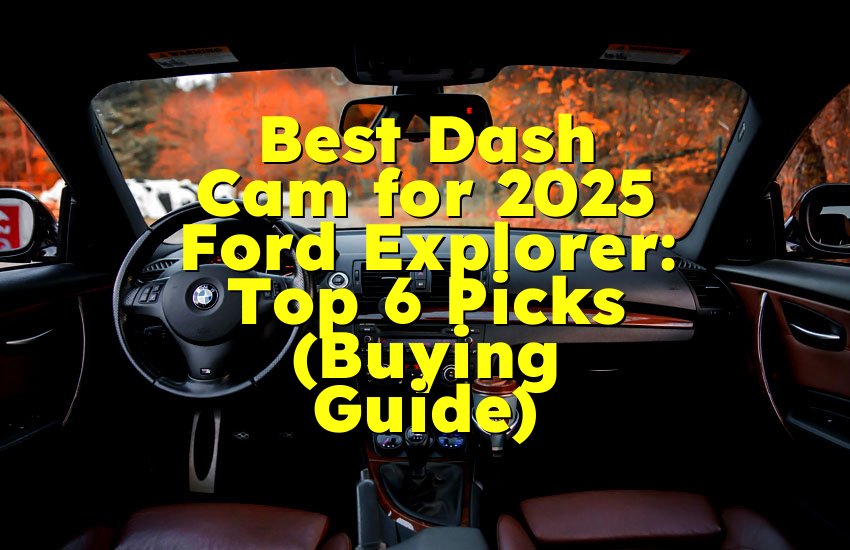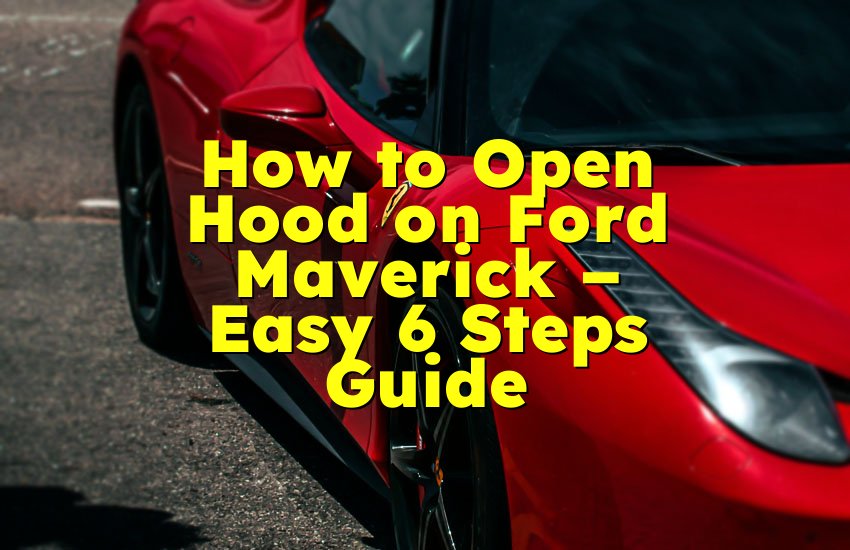As an Amazon Associate, I earn from qualifying purchases at no extra cost to you.
What is the Towing Capacity of a Ford F150? Real Numbers Explained
You probably already know the Ford F150 is one of the most loved trucks in America. But if you are thinking about pulling a trailer, boat, or camper, you need to know how much weight it can tow safely. The answer is simple: The towing capacity of a Ford F150 ranges from 5,000 to 14,000 pounds, depending on the engine, model, and towing package. In this article, I will explain everything in a very simple way to help you fully understand your F150’s towing power.
Know Your Truck's Engine and Model
When talking about how much a Ford F150 can tow, the first thing you must know is which engine is inside your truck. Not all F150s are the same. Some are made for daily driving. Others are built strong for pulling big loads. That is why the engine makes a big difference.
The Ford F150 has different engine options like the 3.3L V6, 2.7L EcoBoost V6, 5.0L V8, 3.5L EcoBoost V6, and the 3.5L PowerBoost hybrid. Each of these engines gives a different towing power. For example, the base 3.3L V6 engine can tow around 5,000 to 7,700 pounds, depending on the truck's build. That might be good for pulling a small trailer, motorcycle, or small boat.
But if you have the 3.5L EcoBoost engine, you can tow up to 14,000 pounds with the right equipment. This is the highest towing capacity available in a Ford F150. It's strong enough for large trailers, campers, or even moving heavy work equipment.
The truck’s model also matters. For example, the XL or XLT models may come with fewer features unless upgraded. On the other hand, models like Lariat, King Ranch, or Limited often include better equipment for towing, especially if they come with the Max Trailer Tow Package.
Also, you should know if your F150 is 2WD (two-wheel drive) or 4WD (four-wheel drive). In general, 2WD trucks can tow a little more because they weigh less. But 4WD trucks are better for rough roads or snow.
- 3.3L Ti-VCT V6: 5,000 – 7,700 lbs
- 2.7L EcoBoost V6: 7,600 – 9,000 lbs
- 5.0L V8: 8,200 – 13,000 lbs
- 3.5L EcoBoost V6: 11,000 – 14,000 lbs
- 3.5L PowerBoost Hybrid: 12,700 lbs
Before you buy or tow anything, check your owner's manual or the label on the inside of your driver's door. It tells you the exact towing numbers for your own truck.
- Check what engine your truck has
- Know the exact model and year
- Understand the difference between 2WD and 4WD
- Max towing needs a special tow package
- Look at the sticker on your door for true numbers
Understand Towing Packages and Features
When it comes to towing, having a powerful engine is not enough. What really increases your truck's towing ability is the towing package. Ford gives you options for adding special towing gear to your F150. If your truck does not have this gear, it might not be able to pull heavy loads safely.
The most important package is called the Max Trailer Tow Package. This package includes many helpful parts like a stronger rear axle, bigger radiator, upgraded brakes, and an integrated trailer brake controller. All of these make your truck ready for pulling more weight.
If your truck has the Max Trailer Tow Package, the towing capacity can go up to 14,000 pounds if matched with the 3.5L EcoBoost engine. This package also helps your truck stay cooler and safer while towing big things.
Another important feature is the Pro Trailer Backup Assist. This tool helps you steer the trailer when backing up. It makes a hard job easier, especially if you are not used to towing.
Also, there is the Tow/Haul mode, which changes how the truck shifts gears. It gives you better power and control when pulling something heavy. Some trucks even come with Smart Trailer Tow Connector, which shows you on the screen if your trailer lights or brakes are working right.
So, even if your truck has a good engine, you still need the right towing tools. Always check if your truck has the tow package before you try pulling something big.
- Max Trailer Tow Package gives the most towing power
- Stronger axles and cooling help pull safely
- Trailer Backup Assist makes reversing easy
- Tow/Haul mode helps with better control
- Smart trailer tools help check lights and brakes
Know the Trailer and Payload Ratings
One mistake many truck owners make is thinking only about the towing number. But you also need to understand payload and Gross Vehicle Weight Rating (GVWR). These are just as important.
Payload means how much weight your truck can carry inside the truck — including passengers, tools, and stuff in the bed. Every truck has a limit, and if you go over it, your truck might not tow safely.
GVWR is the total weight your truck can handle, including its own weight and everything inside it. Then you have GCWR (Gross Combined Weight Rating). That's the total weight of your truck plus the trailer and all cargo.
If you go over any of these ratings, your truck could struggle. Brakes may not work well. The engine may overheat. Worst case, it can cause a serious accident.
That's why you must check:
- How much your trailer weighs (including water, propane, supplies)
- How much stuff you're carrying in the truck
- If your hitch is rated for the trailer
Use a scale at a truck stop to weigh your truck and trailer if needed. Many drivers don't realize they are towing more than they should.
Even if the towing number says 13,000 lbs, your real safe towing might be less once you add cargo, people, and gear.
- Towing number is not the only thing to check
- Payload is also important for safety
- GVWR and GCWR limit total weight
- Use a truck stop scale to be sure
- Don't forget trailer weight includes gear and supplies
Match the Right Hitch and Gear
Your F150 might have strong towing numbers, but if your hitch and gear are wrong, it won’t matter. Using the wrong hitch can damage your truck or cause unsafe driving. That's why it's important to pick the right hitch for the job.
There are different types of hitches. A Class III hitch is good for lighter loads up to about 6,000 pounds. A Class IV hitch handles up to about 10,000 pounds. For heavy trailers, use a Class V hitch. Always check your hitch label for its rating.
Also, you must use the right size ball mount. Common ball sizes are 1-7/8″, 2″, and 2-5/16″. Make sure your trailer coupler matches the ball size exactly. A mismatch can cause your trailer to come loose.
Another helpful tool is a weight-distribution hitch. This spreads the trailer’s weight evenly over the truck’s axles. It keeps the truck level and helps with better steering and braking.
Don't forget the trailer brakes. If your trailer is over 3,000 pounds, you need working brakes on the trailer. Your F150 may have a trailer brake controller built in, or you can add one.
Safety chains, trailer lights, and tire pressure are also very important. Before each trip, walk around the truck and trailer. Make sure everything is connected right and working.
- Use the right hitch class for your trailer weight
- Match the ball size to the trailer coupler
- Weight-distribution hitches help balance the load
- Trailer brakes are a must for heavy loads
- Always double-check lights, chains, and tire pressure
Learn Driving and Safety While Towing
Towing a trailer is not like regular driving. The truck is longer, heavier, and slower. You must drive in a different way to stay safe. Even if your truck has a high towing number, bad driving can still cause problems.
When towing, you need longer stopping distance. So keep more space between you and the car in front. Brake slowly and early.
You also need to make wider turns. The trailer will follow a different path. Watch your mirrors and take your time.
Backing up is one of the hardest parts of towing. Use your mirrors and go slowly. If your truck has the Pro Trailer Backup Assist, use it. If not, ask someone to guide you.
Speed matters too. Do not drive too fast. Most trailers should not go over 65 mph. Fast towing can make the trailer sway and lose control.
Use tow/haul mode on hills and when pulling heavy loads. It helps your truck shift better and keeps the engine from overheating.
If your trailer starts swaying, take your foot off the gas slowly. Do not turn the wheel fast. Let it calm down and then pull over if needed.
Practice towing in an open area before going on a long trip. Get used to how your truck feels with a trailer.
- Leave more space between cars
- Turn wide to avoid hitting curbs
- Back up slowly and use mirrors
- Keep speed low and steady
- Use tow mode for control on hills
Know the Real Limits and Stay Safe
Some people look at the best towing number — like 14,000 pounds — and think they can always tow that much. But that's not true in real life. The real safe number depends on many things like road conditions, weather, hills, and your driving experience.
Your truck may handle a heavy load fine on flat ground, but not on a mountain road. Strong wind can also make towing harder, especially with tall trailers.
Also, towing often causes more wear and tear on your truck. It can heat up the engine, wear the brakes, and stress the tires.
So always be careful and stay below the maximum limits. Think about your trip: Will you drive up hills? Is the road wet? Are you towing every day?
And finally, if you feel unsure, don't push it. Towing safely is more important than towing the biggest load.
- Do not always try to tow the maximum
- Hills, wind, and rain change what's safe
- Towing every day wears down your truck faster
- Real life conditions lower towing power
- Trust your gut and tow carefully
Final Thoughts
Towing with a Ford F150 can be a great experience when done right. With the right engine, tow package, and gear, you can pull a lot — up to 14,000 pounds in some cases. But knowing your truck's real limits, using safe gear, and driving with care makes all the difference. Always check your numbers, take your time, and never rush towing. Whether you’re pulling a camper for fun or a trailer for work, do it the smart way and enjoy the ride with confidence.
Frequently Asked Questions (FAQs)
Is it safe to tow over 10,000 pounds with any F150?
It depends on the engine, towing package, and setup. Some F150 trucks with the 3.5L EcoBoost engine and Max Trailer Tow Package can tow over 10,000 pounds safely. But if your F150 does not have these features, it may not be safe. You must always check the towing chart, your door label, and your owner's manual. Going over the safe limit can damage the truck or cause an accident. Always stay under the truck's true towing number for safety.
Can I tow a fifth-wheel trailer with a Ford F150?
Most fifth-wheel trailers are very heavy, and they need a special kind of hitch in the bed of the truck. Some lighter fifth-wheel trailers can be towed with certain F150s, but it must have a strong payload rating and the right gear. You also need a special fifth-wheel hitch made for the F150's bed size. It is possible, but not common. Most people use larger trucks like the F250 for fifth-wheel trailers. Always check your truck’s payload and frame limits before trying.
Do I need a trailer brake controller in my F150?
Yes, if you are towing a trailer over 3,000 pounds, you should have a trailer brake controller. Many F150 trucks come with this built in, especially if they have the towing package. It helps you control the trailer brakes from the truck and makes stopping safer. Without it, your truck might take longer to stop, and the trailer can push forward dangerously. It’s a smart and safe feature to use every time you tow a heavy load.
Can I install a towing package on my F150 later?
Yes, you can add towing gear later, like a hitch, trailer brake controller, or even a weight-distribution hitch. But you cannot always get the same strong towing power as a truck that came with the Max Trailer Tow Package from the factory. Some parts, like the upgraded axle or radiator, are harder to install later. You can still tow safely with added parts, but always check your limits. Adding a hitch does not raise your towing number.
Is it okay to tow in the rain with an F150?
Yes, but you must drive more carefully. Rain makes roads slippery, and your truck will need more time to stop. Use tow mode to help with gear shifting and stay under the speed limit. Make sure your trailer lights and brakes are working well. Keep more space between vehicles and avoid sudden moves. If the rain is very heavy, it's better to stop and wait. Towing in the rain is safe if you go slow and stay alert.
Can I use a regular hitch for any trailer?
No, not every hitch works for every trailer. You must match the hitch class and ball size to your trailer. A small Class III hitch can't handle a heavy camper. Using the wrong hitch is dangerous and can cause your trailer to break free. Always read the labels and use the right parts. If you're not sure, ask an expert or visit a trailer shop. Safety starts with the right gear every time.
Do I have to use tow/haul mode when pulling?
You don't have to, but it helps a lot. Tow/haul mode changes how your truck shifts gears. It gives you more control and better braking. It also keeps the engine from working too hard, especially on hills. Without it, your truck might shift too often or overheat. Tow/haul mode is made for pulling heavy loads, so using it makes driving easier and safer. Just press the button and let your truck do the work.
Can towing often hurt my F150?
Yes, towing heavy loads often can wear out your F150 faster. The engine, brakes, and tires work harder when you tow. Over time, this can lead to more repairs. That's why it's important to follow maintenance rules. Check fluids, brakes, and tires more often. If you tow often, take extra care of your truck. It can still last a long time if you treat it right and don't go over the safe limits.









